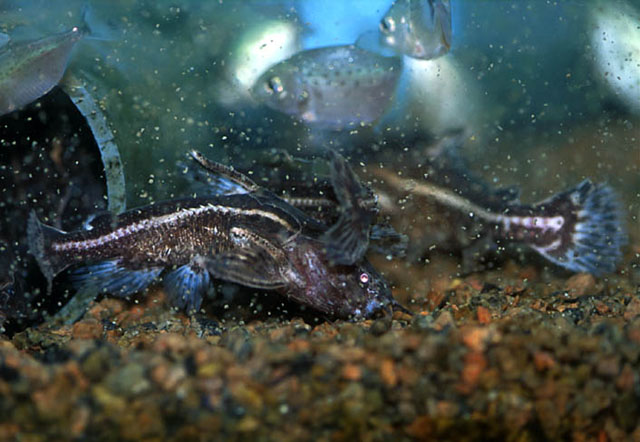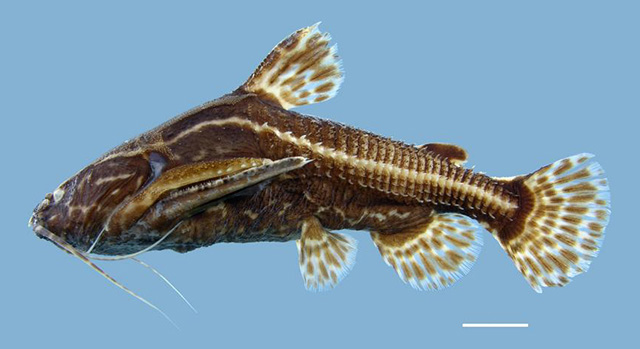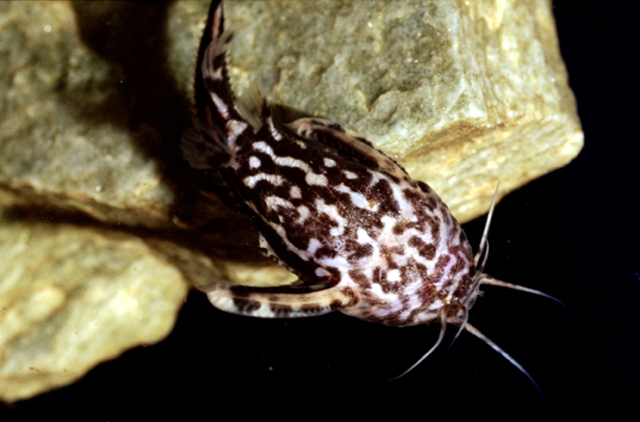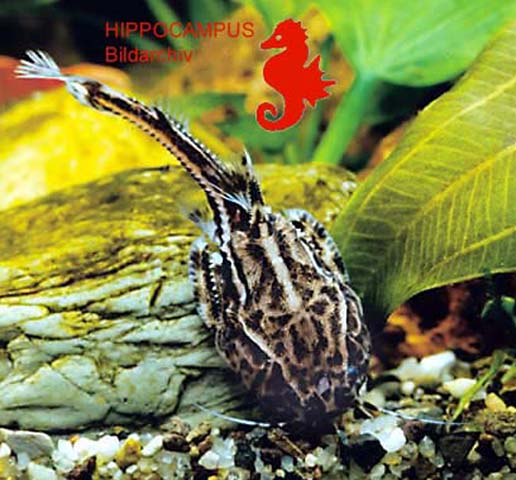Acanthodoras cataphractus (Linnaeus, 1758)
Description
Dorsal spines (total): 1; Dorsal soft rays (total): 5; Anal soft rays: 10 - 11. The body is a little elongated, without scales, with one lateral range of bony plaque. The head is large and flattened. Mouth terminal, and has three pairs of barbels. Eyes are small (Ref. 35381).
Common Names
Taxonomic Hierarchy
Kingdom: Animalia
Phylum: Chordata
Class: Teleostei
Order: Siluriformes
Family: Doradidae
Genus: Acanthodoras
Species: Acanthodoras cataphractus (Linnaeus, 1758)
Climate Zone
Location
Biology
Abundant in calm waters of swamps and mangroves (Ref. 27188). Omnivorous, feeds mainly on organic wastes. Searches for food by digging in the sediment. Active at night, lies hidden in the underwater roots and stocks during the day. Every basic unit of the sound they emit when they move their pectoral spine lasts 100-200 milliseconds with a frequency of 170-250 Hertz (Ref. 35381). Maximum length reported to reach 20 cm TL (Ref. 35381).
Habitat
demersal
Conservation Status
Least Concern
Threat to Humans
Harmless




